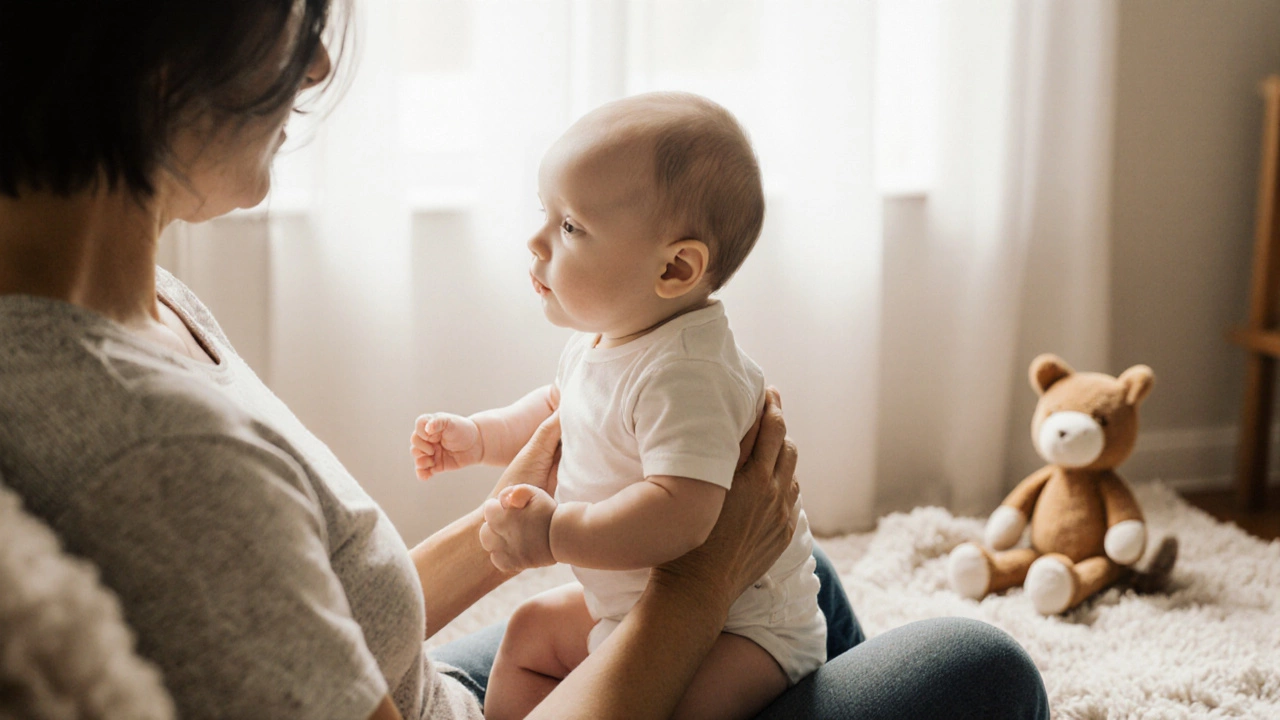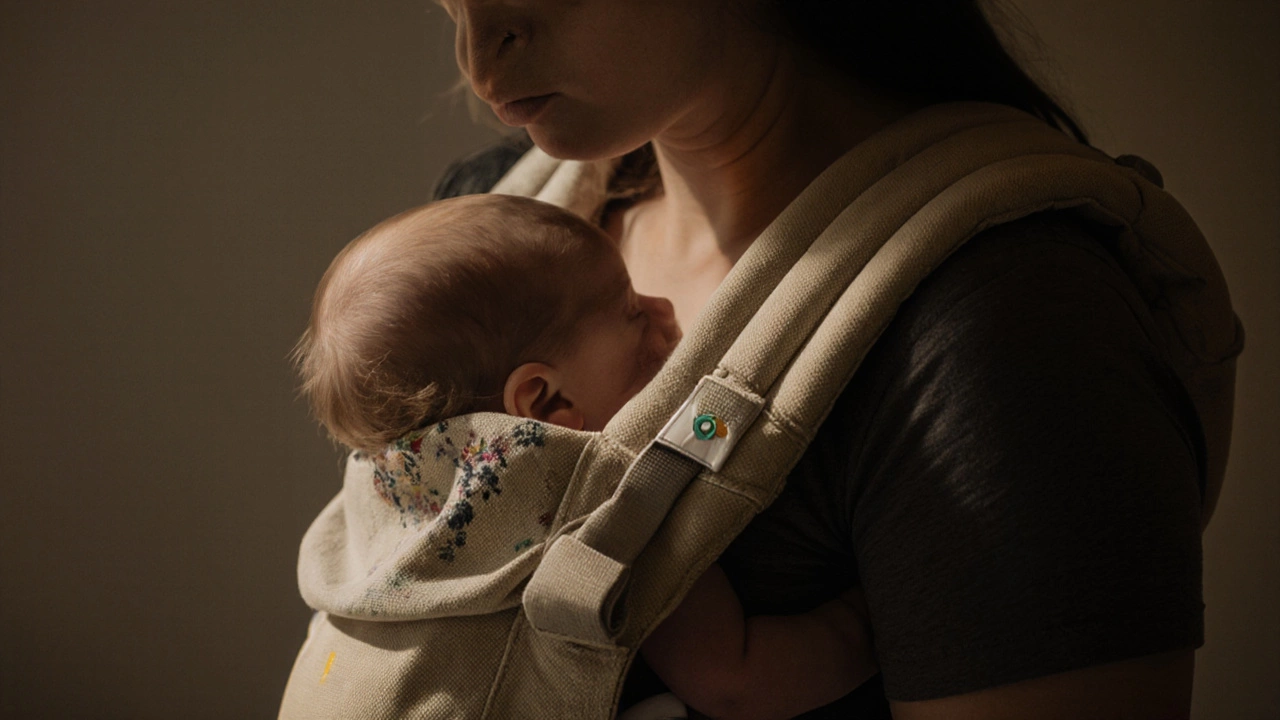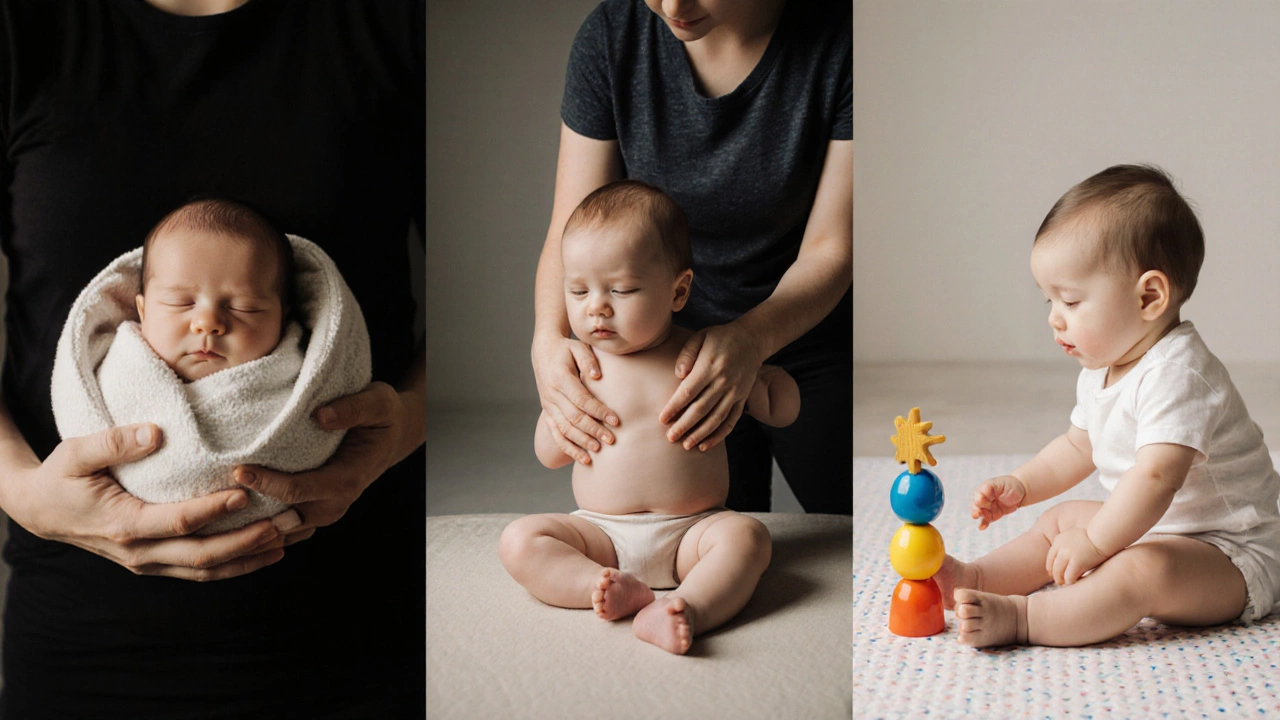Is Holding a Baby in a Sitting Position Bad? What Pediatricians Actually Say

Many new parents worry: holding a baby in a sitting position-whether in your arms, on your lap, or in a carrier-could hurt their spine or stunt their development. You see friends propping up their 3-month-old in a Boppy pillow or strapping them into a carrier that leans them forward, and a voice inside you whispers, Is this safe? The truth isn’t as simple as yes or no. It depends on age, support, duration, and how your baby’s body is responding.
Why This Question Comes Up
Babies are born with soft, curved spines. Their neck muscles are weak, and their hips and pelvis are still forming. Unlike adults, they don’t have the strength to hold themselves upright. So when you sit a baby up before they can do it on their own, you’re asking their body to do something it’s not ready for. That’s where the fear comes from.But here’s what most parents don’t realize: babies aren’t fragile glass figurines. They’re resilient, adaptable, and designed to grow through movement-not just rest. The real issue isn’t sitting them up once in a while. It’s how and how often you do it.
When It’s Okay to Hold a Baby in a Sitting Position
By 4 to 6 months, most babies start showing signs they’re ready to sit with help. You’ll notice them pushing up on their arms during tummy time, lifting their head steadily, and leaning forward without collapsing. That’s their body telling you it’s time to try supported sitting.At this stage, holding your baby in a seated position on your lap-with your hands supporting their back and sides-is perfectly fine. Many parents use this position during feeding, singing, or playtime. It’s natural, comforting, and helps babies practice balance. Just make sure their head isn’t flopping forward, their hips aren’t splayed wide, and their spine isn’t forced into an unnatural curve.
Even in baby carriers, a semi-upright position is safe if the carrier provides proper head and neck support. Look for carriers designed for newborns that keep the baby in a natural C-curve, with their knees higher than their hips. That’s called the M-position, and it’s what pediatric orthopedists recommend for hip development.
When It’s Not Okay
Holding a baby in a sitting position before they have head control-say, under 3 months-is risky. Their neck muscles can’t stabilize their head, which means their chin can fall to their chest. That blocks their airway. It’s not dramatic or obvious-it happens quietly, while you’re multitasking or tired.Another problem: propping babies up in pillows or seats that don’t support their back. A Boppy pillow might look cozy, but it doesn’t hold the spine in alignment. It lets the baby slump forward, which puts pressure on their lower back and can lead to rounded shoulders or even breathing difficulties over time.
And don’t confuse sitting with standing. Holding a baby under the arms and letting them bounce on your legs might seem fun, but it forces their legs to bear weight before their bones and joints are ready. That’s not just bad for posture-it can affect hip alignment.
What Pediatricians Recommend
The American Academy of Pediatrics doesn’t say you can’t hold a baby sitting up. They say: Wait for signs of readiness. That means:- Your baby can hold their head steady for 10+ seconds when pulled to sit
- They push up on their arms during tummy time
- They don’t collapse backward when supported
- They show interest in sitting up to look around
That usually happens between 4 and 7 months. Before then, focus on tummy time, side-lying play, and carrying them in a curled-up, cradled position. These positions mimic the womb and help build the muscles they’ll need to sit, crawl, and walk.
Dr. Elena Ruiz, a pediatric physical therapist in Vancouver, says: “I see parents rushing to sit babies up because they want them to ‘look like they’re growing.’ But development isn’t a race. It’s a sequence. Skip the steps, and you risk creating habits that are hard to unlearn.”

Carrier Safety: Sitting Position vs. Newborn Position
Baby carriers are great-but only if used right. Many parents switch to a “front-facing out” position too early. That’s a sitting position with zero back support. Babies under 5 months shouldn’t be in it. Their necks can’t handle the strain, and their hips are forced into an unnatural spread.Instead, use the inward-facing, cradled position until your baby can hold their head up independently. Look for carriers with:
- A wide, supportive base that cradles the thighs
- A headrest that can be adjusted for newborns
- Back support that follows the natural curve of the spine
Brands like Ergobaby, Tula, and BabyBjörn have newborn inserts designed for this exact purpose. Don’t skip them. Even if your baby seems “big enough,” their spine still needs that extra support.
Signs Your Baby Isn’t Ready
If you hold your baby upright and notice any of these, stop and try again later:- Head lolling backward or forward
- Arching their back or stiffening their limbs
- Crying or fussing when placed in a sitting position
- Slumping to one side
- Shallow or rapid breathing
These aren’t just signs of discomfort-they’re your baby’s body saying, “I can’t do this yet.” Pushing through it won’t make them stronger. It’ll just teach them that being in pain is normal.
What to Do Instead
Instead of forcing sitting, give your baby the movement they need to build strength naturally:- 20-30 minutes of tummy time daily (spread out in short sessions)
- Carrying them in a snug, curled-up hold against your chest
- Side-lying play with toys within reach
- Supported rocking or gentle bouncing while lying on your lap
These activities build neck, back, and core muscles without pressure. They also help with digestion, reduce reflux, and promote better sleep.

Long-Term Impact
There’s no evidence that occasional, supported sitting causes permanent damage. But repeated, unsupported sitting before readiness can lead to:- Delayed motor milestones (like rolling or crawling)
- Weak core muscles
- Postural habits that carry into toddlerhood
- Hip dysplasia risk if legs are forced into wide, unsupported positions
One 2023 study from the University of British Columbia followed 120 infants and found that those who were frequently held upright before 5 months took an average of 3 weeks longer to sit independently than those who were allowed to develop at their own pace.
It’s not a huge delay-but it’s a delay. And in early development, weeks matter.
Final Rule of Thumb
If your baby can’t lift their head on their own, don’t sit them up without full support. If they’re under 4 months, avoid any position that makes them look like a tiny human in a chair. If you’re unsure, ask your pediatrician to watch how your baby moves during a checkup. Most will tell you: “Let them show you when they’re ready.”Trust their body. It knows what it needs.
Can I hold my newborn upright?
Yes, but only in a fully supported, curled-up position-like holding them against your chest with their head resting on your shoulder. Avoid any position where their head is unsupported or their spine is straightened. Newborns need to stay curled to feel secure and to protect their developing spine.
Is it okay to use a Boppy pillow to sit my baby up?
No. Boppy pillows and similar products don’t provide spinal support. They let babies slump, which can strain their neck and back. They’re designed for supervised tummy time or feeding, not for upright sitting. If your baby’s head is falling forward or their back is rounded, it’s not safe.
When should my baby be able to sit up on their own?
Most babies sit without support between 6 and 8 months. Before that, they’ll sit with help from 4 to 6 months. Every baby is different-some sit earlier, some later. What matters is that they reached the milestone through their own muscle development, not because they were propped up.
Do baby carriers cause hip problems?
Only if used incorrectly. Carriers that force a baby’s legs straight down or spread too wide without thigh support can increase hip dysplasia risk. Always choose carriers that keep knees higher than hips and support the thighs. The International Hip Dysplasia Institute approves several models for healthy hip positioning.
My baby seems to love sitting up-should I let them do it more?
If your baby is 5 months or older and holds their head steady, then yes-short periods of supported sitting are fine. But don’t replace tummy time or floor play. Sitting is just one position. Babies need to move in all directions to develop strong muscles and coordination. Let them choose when to sit, not force them into it.
What to Watch For Next
Once your baby starts sitting independently, keep an eye on how they move. Do they lean forward and fall? Do they twist to one side? Do they avoid rolling over? These could be signs of muscle weakness or developmental delays. Talk to your pediatrician if you notice patterns that seem off.The goal isn’t to stop sitting your baby up-it’s to do it at the right time, the right way, and not too much. Let their body lead. You’re not training them to sit. You’re helping them grow into it.

